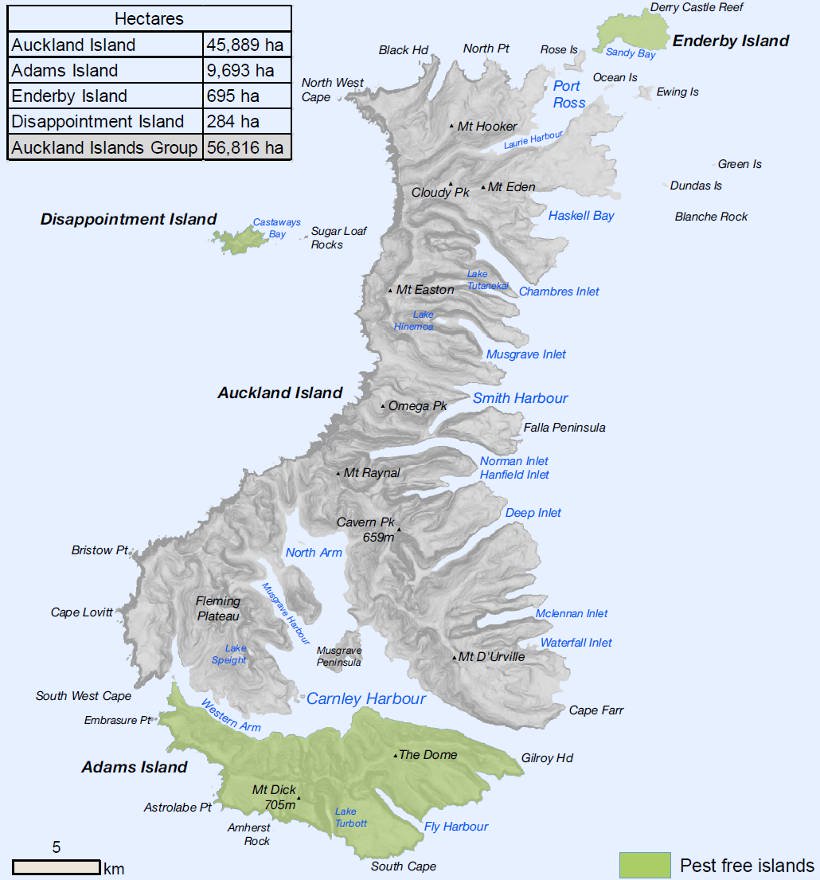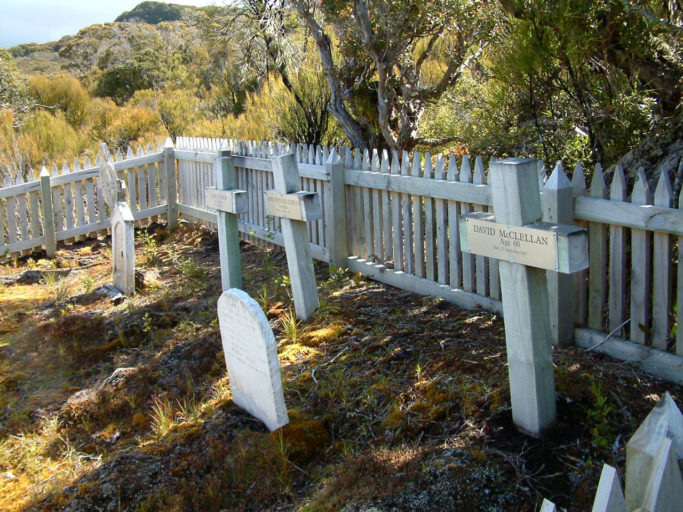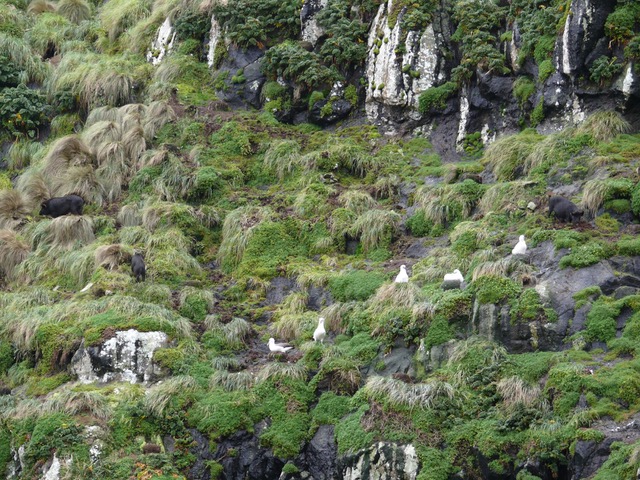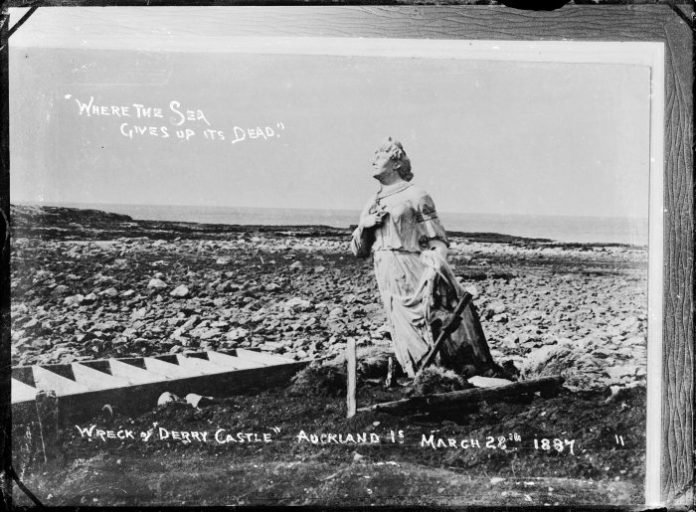Did you know there were once horses on the Auckland Islands? Possums were deliberately introduced too but didn’t last long. Hardly surprising. It’s a harsh environment and not remotely like their warm Australian homeland.

Scientists investigating mammal predators in the Auckland Islands group have switched to studying history recently, looking at the very early records of mammal introductions to the islands to better understand the effects the various predators and mammal combinations have had. Different islands in the group had different introductions and, in many cases, those introduced mammals have now died out naturally or been removed.
The full article is published in Notornis the research journal of Birds New Zealand.
“Since the European discovery of the Auckland Islands, at least ten species of land mammals have been introduced there. Most arrived in the first half of the ninteenth century during periods of exploitation by sealers and whalers, followed by short-lived Māori and European settlements at Port Ross.”
Many of the introductions were deliberate – and sometimes it took several attempts for introductions to be successful. Here are some of the mammal histories that the researchers uncovered.
Horses
“During the settlement era, three horses were introduced to and moved between Auckland and Enderby Islands in 1849 and were removed in 1852 when the Hardwicke settlement was abandoned.”
Cattle

“During the settlement era, 45 cattle were introduced to Auckland and Enderby Islands in 1849. They were removed from Auckland Island in 1852, when the Hardwicke settlement was abandoned. Cattle remained on Enderby Island but had died out by the time Māori left in 1856. In 1894, new stock were introduced to Enderby Island as part of W.J. Moffett’s pastoral lease of northern Auckland Island. They never reached large numbers, and were reported as being in poor condition, but nonetheless, tussock was virtually eliminated from Enderby Island by the start of the twentieth century.”
“The cattle on Enderby Island were described in 1990 as hardy, small, and stocky. In April 1991 the Department of Conservation (DOC) shot 47 animals (25 of them females), but attempts to collect reproductive material (eggs and sperm) from shot cattle failed. In February 1993 only one cow and her heifer calf remained, and they were transported alive to the Dairy Unit at Massey University to establish a mainland breeding programme for the breed.”
Sheep
“During the exploration era, sheep were first introduced to Auckland Island by James Clark Ross in 1840, and thereafter died out. They were reintroduced periodically during the Hardwicke settlement, and as food for castaways over the following six decades. Leaseholder Frederick Monckton ran sheep briefly from 1874 to 1877 at Port Ross and on nearby Davis Island, and George Fleming ran sheep on Circular Head, Carnley Harbour, from 1900. However, by about 1910 sheep had died out completely on Auckland Island.”
“At least 20 sheep from Campbell Island were landed on Ocean Island in 1942 to provide meat for the coastwatchers, and in the following year they were recorded altering habitat, thereby exposing Auckland Island pipits to southern skua predation. In 1944, 12 of the Ocean Island sheep were transferred to Rose Island, but all sheep on both islands were killed by the end of 1944.”
Goats
Goats were also introduced but even this hardy, adaptable and clever species struggled to survive in the sub-Antarctic environment.
“Goats were first introduced to Auckland Island c. 1840 but did not survive long. During the settlement era, goats were introduced to Enderby and Ewing Islands in 1850 but did not survive. During the shipwreck era, they were introduced again in 1865 to Auckland, Enderby, and Ocean Islands as a hunting resource for castaways. On Auckland Island they died out in the late 1860s, while on Enderby Island they persisted until dying out in the 1880s, with two further animals landed there in 1890.”
“In about 1885, goats were again introduced for castaways on Adams Island, but died out the same year. In the late 1880s further goats were introduced to the Port Ross area of Auckland Island, and subsequently to Figure of Eight Island (1890) and Monumental Island (1891). Two or three goats were released on Ewing Island in 1895, and they persisted there until at least 1904, when ‘a good many’ were seen.”
Goats from the Port Ross area did survive and breed, but their lives seemed to have been tough – with finding food and eating it an almost constant occupation.
“By the 1970s about 100 goats persisted across about 4,000 ha of the Hooker Hills at the northern end of Auckland Island. They spent their days feeding in small groups, and no reproductive behaviour, play or inactive rest was observed.”
Eradication of goats from Auckland Island was first proposed in 1968.
“From 1986–1987, 67 goats were transported alive to Landcorp properties on the South Island, but these captive animals had died out by the end of the 1990. After more than a decade of debate, eradication of goats from Auckland Island commenced in Nov 1989, when 105 goats were shot by two hunters.”
“The diet of goats on Auckland Island was studied through stomach contents of 49 of the shot animals, and consisted of 50 species of plant, of which three (southern rātā, snow tussock, and bull kelp) made up over half of stomach contents by dried weight. Goats were gradually transforming the vegetation, from tussock grassland to woody vegetation. The few remaining goats on Auckland Island were shot in 1991.”
Pigs

Unlike goats, pigs seem to have thrived on the Auckland Islands at a huge cost to endemic plants and wildlife.
“Following its European discovery, pigs were rapidly introduced to Auckland Island, with Captain Abraham Bristow landing them on Enderby Island and at the northern end of Auckland Island in 1807, presumably as a food source for visiting ships and castaways. The Auckland Island population was supplemented by an additional liberation on nearby Davis Island at Port Ross in 1840, with animals also landed on Shoe Island at the same time. Although pigs had not reached the southern end of Auckland Island by 1865, they had reached ‘large numbers’ at the northern end of the island and were distributed across all habitats and altitudes. Within five years the population had crashed; however, today they remain widespread across the island.”
“Pig impacts were already being noted on Auckland Island by the end of the exploration era, with extensive rooting, and consumption of the megaherbs Stilbocarpa polaris, Anisotome latifolia, and Pleurophyllum criniferum. Depredation of birds (burrowing petrels) was first observed in 1874-75. Direct predation impacts by pigs on Auckland Island have been recorded on white-capped molly- mawk, northern giant petrel, Antarctic prion, yellow-eyed penguin, Auckland Island shag and southern black-backed gull. The coastwatchers based at Ranui Cove observed the impacts of pigs on Auckland Island shags nesting at Crozier Point, with accessible parts of the colony rooted up overnight and many eggs eaten.”
With the accessible shag and prion colonies destroyed, pigs turned to other species.
“Most of the recent reports of pig impacts on birds on Auckland Island have been at the accessible fringes of the white-capped molly- mawk colony at South West Cape. Flux (2002) observed a sow with the head of a freshly killed mollymawk chick in her mouth, and a piglet chewing on a mollymawk foot. Another sow snuffled around freshly destroyed nest mounds, and a large boar was seen in another part of the colony where there were destroyed nests, and where feet and other remains of several chicks were seen.”
Pigs also eat other large surface-nesting seabirds.
“The remains of a yellow-eyed penguin were found inside a pig stomach, pig faeces full of penguin feathers have been found, and the remains of a yellow-eyed penguin chick consumed by pigs was found south of Dea’s Head in Jan 2018.”
Dogs
“Dogs were first present in the Auckland Islands with Polynesian voyagers in the thirteenth century. Kurī (Polynesian dog) gnaw marks on New Zealand fur seal and New Zealand sea lion bones from that era have been recorded on Enderby Island. During the settlement era, Māori introduced dogs to Auckland Island, which escaped and ran wild across the entire island but had died out by the time Māori left in 1856. Dogs of European origin, likely to have been lost or abandoned by sealers, were also sporadically reported across Auckland Island from 1864 to 1887.”
Cats
“Cats were first recorded on Auckland Island in 1840 at Terror Cove, Port Ross, presumably having been introduced earlier by sealers, probably in response to nuisance from mice. Thereafter they were regularly observed throughout the nineteenth and twentieth centuries. However, it was not until the Cape Expedition during the Second World War that cat impacts began to be recorded. Tamed feral cats adopted as companion animals by the coastwatchers at the two stations at Ranui Cove (Port Ross) and Tagua Bay (Carnley Harbour) probably killed more than 100 birds during 1942–45.”
Possums
“Nine possums were introduced to Auckland Island in 1890 probably by the crew of the Hinemoa at Erebus Cove on 25 Oct 1890. Having not established, they must have died out.”
Rabbits
Captain Cole of the whaling vessel Huntress of New Bedford released four rabbits at the Auckland Islands in March 1837. There were also various other introductions.
“It was not until the Cape Expedition during the Second World War that rabbit impacts began to be recorded, predominantly through habitat transformation, and as a food resource for southern skua, thereby increasing their population and encouraging elevated ‘hyperpredation’ of native birds. In September 1992, 50 rabbits (15 does and 35 bucks) from Enderby Island were captured, of which 49 were transported live to quarantine on Matiu/ Somes Island, Wellington, to start a breeding programme. In February 1993 DOC eradicated rabbits from Enderby and Rose Islands using aerially distributed 0.002% brodifacoum cereal pellets dyed green, followed by hunting with a dog, shooting, spotlighting, and trapping.”
Rats
Surprisingly rats have never become established on the Auckland Islands. The researchers believe that a record of “abundant rats present in a whalers’ hut on Enderby Island in March 1840” likely confuses mice with rats.
Mice
Auckland Island is among the earliest sites in New Zealand to be colonised by mice.
“At the end of the exploration era, mice were first recorded on Auckland Island in 1840 at Port Ross, presumably having been accidentally introduced by sealers. Thereafter they were a persistent human nuisance. They are distributed across all habitats and altitudes, preferring tussock, where their population fluctuates with mast-seeding.”
Mice are the smallest of the introduced mammals, but are thought to have had both direct and indirect impacts on native species.
“There are no records of direct impacts of mice on birds on Auckland Island, but comparison of invertebrate species with those on neighbouring mouse-free islands reveals lower abundancies of Auckland Island wētā and large weevils, indicating that mice may have reduced some food sources that may be used by birds. Further to such gross changes, mice may have altered invertebrate community composition in more subtle ways, although seabird absence and the impacts of pigs also play a role.”
Modern genetics techniques offer some clues to the historic source of the Auckland Island mice.
“Mitochondrial DNA genetic studies of mice from Auckland Island reveal that they are of the subspecies M. musculus domesticus, similar to those introduced to mainland New Zealand, but nuclear DNA genetic studies reveal that they have an independent origin with North American linkages.”
And finally, there is one more introduced mammal that has had an impact on the islands, although it no longer lives there on a permanent basis.
Humans
“Besides their role in the introduction of other mammals, humans also had other direct and indirect impacts on birds on the Auckland Islands. During Polynesian presence in the thirteenth century, seabirds (Auckland Island shag, yellow-eyed penguin, sooty shearwater, white-chinned petrel, white-headed petrel, southern royal albatross), and Auckland Island teal, as well as New Zealand sea lions and New Zealand fur seals, were all consumed. During the exploitation era, New Zealand fur seals were rapidly exterminated, within 20 years, and New Zealand sea lions were greatly reduced in number. This is likely to have had multiple effects on bird populations through habitat changes, and through virtual elimination of seal predation and competition.”
Humans also altered the environment by introducing plants.
“Sealers are likely to have inadvertently introduced seeds of the tree daisy Olearia lyallii to Ewing Island, and, potentially accelerated by the habitat changes caused by goats and pigs, this has greatly altered the forest structure there. Other species such as harakeke, koromiko, and kōtukutuku are known plant introductions that were probably intentional. During the exploitation and settlement eras, forest clearance and intentional fires occurred, mainly around Port Ross and on Enderby Island, along with habitat transformation through the introduction of non-native plant species such as annual poa, chickweed, sow thistle, common daisy, sheep’s sorrel, white clover, browntop and jointed rush. Some invertebrates were probably also introduced.”
“Māori settled in two parties, on Enderby Island and at Tucker Point, Port Ross, from 1842 to 1856, while Europeans settled in Port Ross and farmed on Enderby Island from 1849 to 1852. Through the exploitation to shipwreck eras, southern royal albatross and other seabirds were eaten by humans, the albatross to such an extent that they were exterminated from Enderby Island by the 1870s but began recovering there from the 1940s.”
Shipwreck survivors were unwilling residents of the islands and consumed local birdlife.

“Shipwreck survivors had localised, short-term impacts on birdlife, with both the Grafton and Invercauld survivors consuming hundreds of Auckland Island shags (from Carnley Harbour and Rose Island, respectively) in 1864–65, and an estimated 12,000 white-capped mollymawk chicks being consumed by the survivors of the Dundonald wreck on Disappointment Island in 1907.”
Finally, there were the wildlife ‘collectors’.
“The Auckland Island merganser (Mergus australis) was last seen in 1902, the final individuals all being collected for museums, alongside many other bird species also killed for museum collections or simply for sport.”
Not all the introduction attempts were for mammals, according to the researchers. Failed attempts were also made to introduce chickens, Muscovy ducks, geese and weka. Eradication of pigs, cats, and mice from Auckland Island and Masked Island (Carnley Harbour) would remove the last introduced mammals from the New Zealand sub-Antarctic region.”
“The eradication of any of these species would enable recoveries of components of the biodiversity of Auckland Island, but the simultaneous eradication of all three species is recommended as the appropriate management action to minimise operational costs while maximising restoration opportunities.”
The full article is published in Notornis and is freely available to subscribers. Access may also be available through public libraries.
Introduced land mammals and their impacts on the birds of the subantarctic Auckland Islands (2019)

